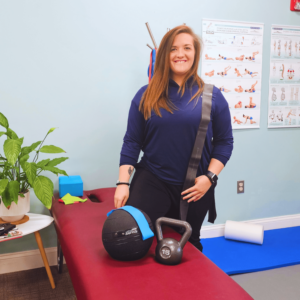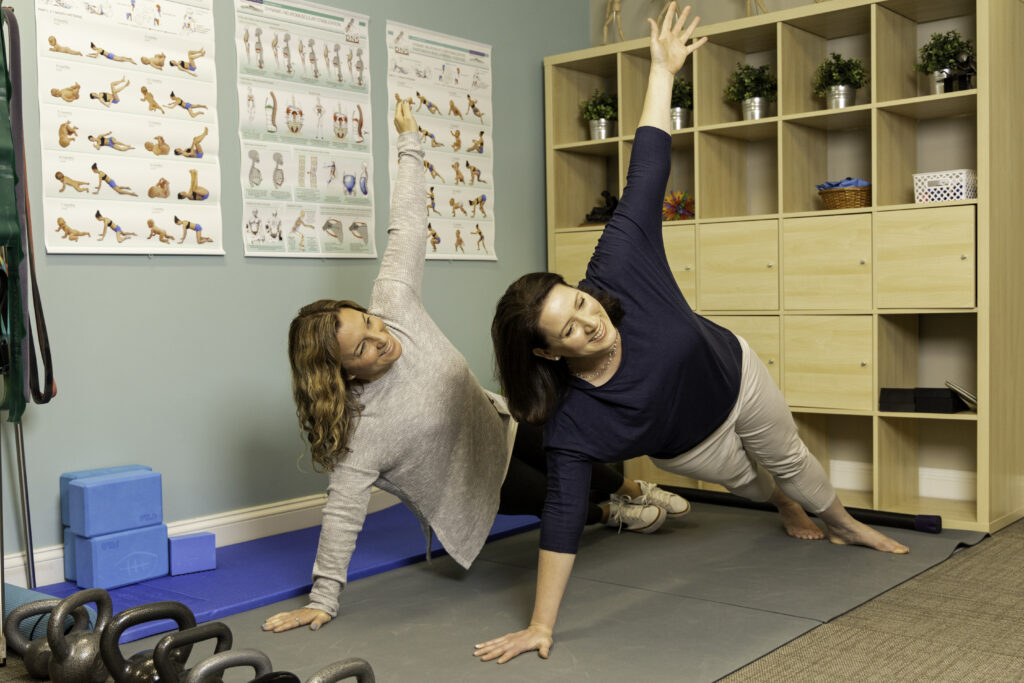Exercise is often prescribed for patients of all ages to reduce complaints about pain in muscles and joints, but some feel it gets harder to exercise as they get older.
I’ve been inactive for so long. Won’t it hurt to exercise?
You can always become as physically fit as possible, given your current health status and limitations. When you commit to a physical fitness program, you will move toward enjoying life more fully.
First, pick an activity that you enjoy doing, and do it regularly. Make your exercise program as pleasant as possible. If you feel exercising is a chore, you will be uncomfortable with the program and will quit. If you can, ask a friend to exercise with you so you can support each other.
Second, begin your exercise program gradually, starting with five minutes of exercise each day. As you become more comfortable with the routine and notice the positive effects of fitness, you may increase your exercise time.
If you have been inactive for some time, you may feel some small aches and pains. They will fade with time. Be sure to tell your doctor if you experience any unusual pain or other symptoms during or after your exercises. Check with your doctor of chiropractic before starting any exercise or physical fitness program. While exercise is beneficial to your health, the type of exercise you perform can be affected by your health status.
How do I start?
Develop a plan for an exercise program and stick with it. Make your exercise program an integral part of your normal daily activities – or use normal daily activities to help your muscles and bones become as healthy as possible.
• Research shows that “functional exercises”— those that mimic actual daily activities, such as walking up and down stairs and getting in and out of a chair — can be quite effective.
• Some research suggests that people who live in two-story houses are less prone to certain types of heart disease. Repeatedly climbing a flight of stairs or rising from and returning to a seated position helps build leg strength and aerobic fitness. If you hold a weight during these exercises, you can increase your level of physical activity even further.
• Household chores, such as vacuuming, loading and emptying the dishwasher, and moving wet laundry from the washer to the dryer can increase strength and flexibility. Lift with your legs, when necessary.
I don’t feel as strong as I used to. Can I still exercise?
As we age, we lose muscle mass. Some healthcare providers suggest that weight training will help prevent strength loss and keep patients feeling younger. Unfortunately, many seniors find they can’t lift the heavy weights necessary to actually build muscle mass, but don’t be discouraged. Recent studies show that while muscle strength diminishes with age, muscle endurance does not. It means that, as we get older, we may benefit from switching strength exercises to endurance exercises, working muscles with lighter weights for a longer period of time.
Exercises that emphasize endurance, such as dancing, walking, or bicycling, maybe not only more beneficial but also more enjoyable. Many senior citizens have neighborhood areas where they can get together to walk. Walking with a family member or friend helps your physical fitness — and helps build relationships. These exercises are also aerobic and will benefit your heart health. For people who cannot walk or ride a bike, there are endurance- and flexibility-enhancing exercises that can be performed in a chair.
Set goals for yourself that can be tracked, and make them a part of your overall health plan.
I have arthritis. How can I exercise safely?
Physical activity actually decreases arthritic pain. Many people with rheumatic conditions are physically inactive. There is often a fear factor for seniors when it comes to activity and arthritic pain – a social fear, a fear of pain, a fear of falling, etc.
However, for those with arthritis, the worst thing they can do is stop moving. In most cases, you can — and should — exercise. In fact, recent research has shown that older people with arthritis gain modest improvements in physical function, pain, general mobility, and flexibility when participating in long-term exercise programs.
Water-based exercises, such as swimming or “water walking,” can work on joints without putting them through the stress of weight bearing. If necessary, your doctor can show you how to use a cane, a walker, or other assistive devices to help prevent falls and injuries while you are physically active.
Which fitness program will help me the most?
The best exercise program should be tailored to your individual health status. Your doctor of chiropractic can help you plan the fitness program that is right for you.
Typically, low-impact activities that keep joints moving and minimize pain, such as walking, swimming, and water-based exercise, are effective. Research has shown that exercise can reduce joint stiffness, pain, and inflammation associated with arthritic conditions, which affect most of us as we age.
Doctors of chiropractic can not only help restore muscle and joint function that has been affected by injury, illness, and age-related conditions, but they can also maintain the health and flexibility of your muscles and bones. They often prescribe exercise to prevent and treat many of these conditions, helping older patients to remain active and independent.





